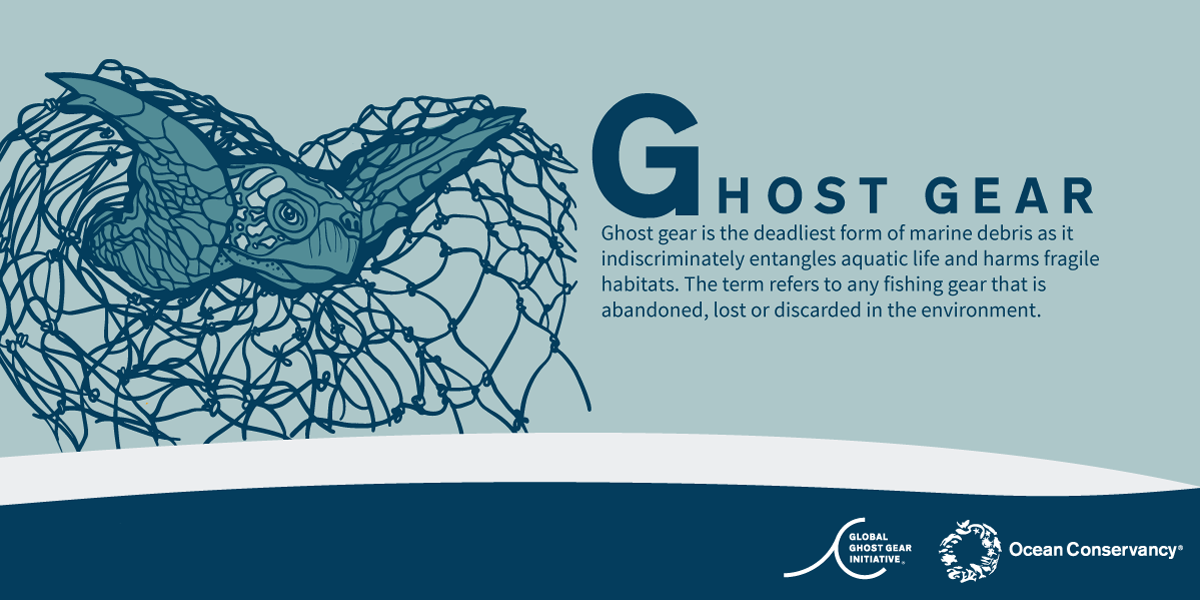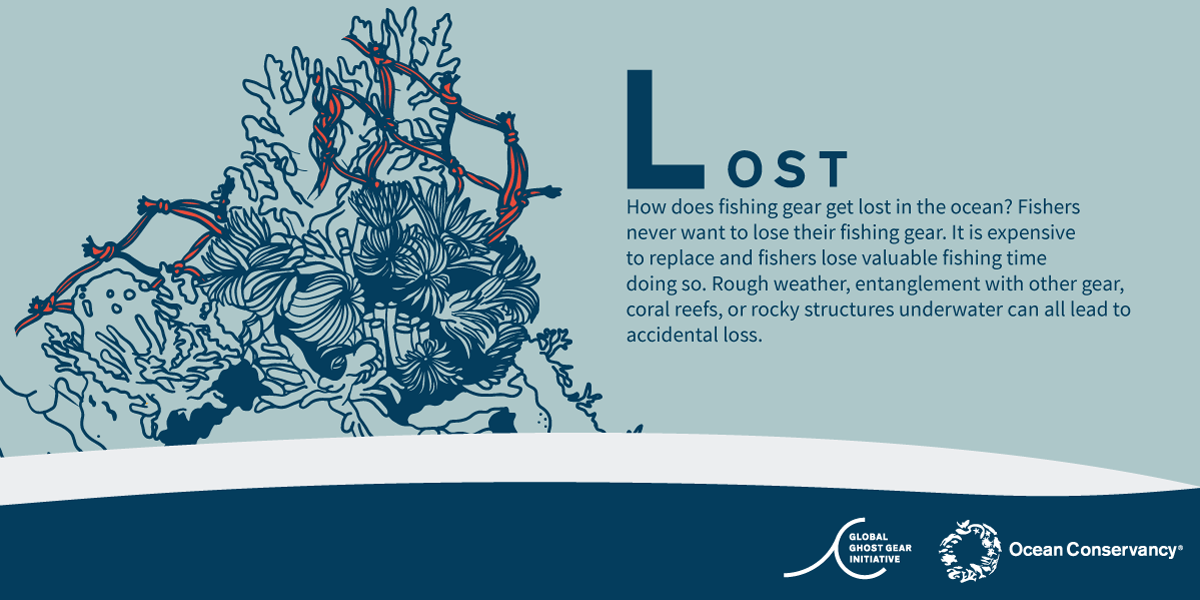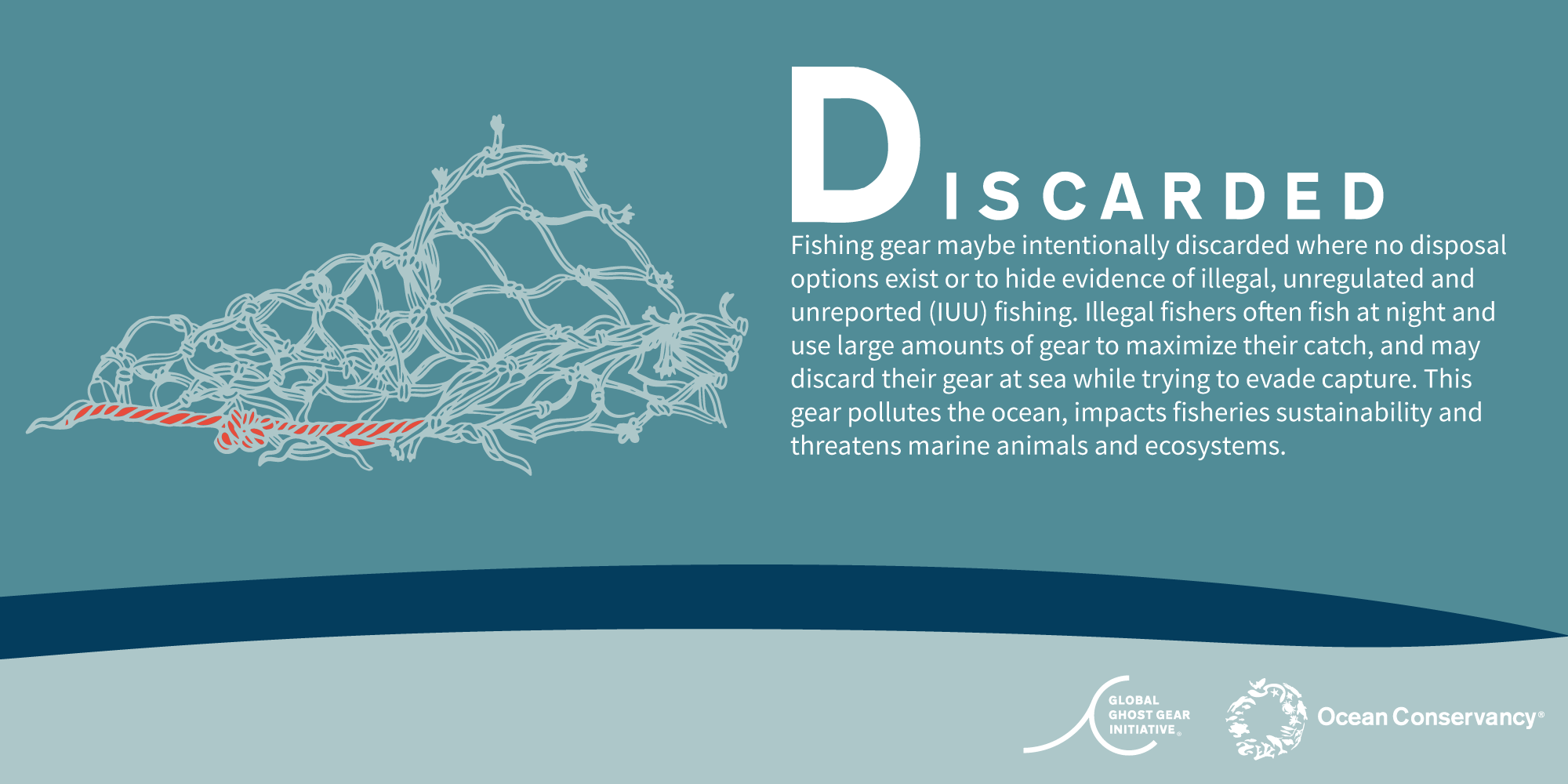Do You Know Your ALDFGs?
We have a tale to tell about ghost gear

When we think of plastics in the ocean, the image that comes to mind is often the kinds of plastics we see in everyday life. We conjure up visions of bottles, straws and carryout food containers. What’s missing from that picture happens to be the most widespread and deadliest form of debris in the ocean: ALDFG.
Fishers don’t want to lose the expensive equipment that provides their incomes. But severe weather events, rocky bottoms and other snags underwater can result in lost gear.
Ghost gear threatens marine ecosystems around the world—from shallow coral reefs to deep- water landscapes. It can be particularly deadly to all the incredible marine life that call the ocean home. Fishing gear is designed to trap marine organisms, and it can continue to do so long after the gear is lost or discarded in the ocean.
Fortunately, at Ocean Conservancy we are committed to tackling the problem of ghost gear. Our Global Ghost Gear Initiative® (GGGI) is the only global alliance solely dedicated to tackling this threat. Tackling a complicated problem like ghost gear takes collaboration, creativity and hard work. The GGGI works with partners around the world both to remove ghost gear and prevent more from being lost in the future.
Tackling the issue of ghost gear requires “all hands on deck,” and that’s where you come in. Each person who learns about this issue is one more person to help in the fight to prevent ghost gear from ending up in our ocean. That’s why we’re helping you sharpen your knowledge of ghost gear. We’ve created an alphabet of terms that will make it easy to learn your ALDFGs.
G is for Ghost Gear

Let’s start with a softball! By now you should be familiar with the term “ghost gear.” No matter how fishing gear is lost, it wreaks havoc on our environment. It can also have a damaging impact on people’s livelihoods: in some places, ghost gear can reduce fish stocks by as much as 30%. It’s a problem that impacts everyone. That’s why we are working with everyone—from international forums to individual fishers—to solve it.
A is for Abandoned

Fishing gear is usually abandoned intentionally only in emergency situations or when fishers don’t have access to port reception and disposal. However, when that gear is abandoned, it becomes a real danger to the creatures who live in those waters. To solve a problem as large as ghost gear, we need to track gear and gain a clearer picture of the issue through data. That’s where the GGGI Ghost Gear Reporter app comes in. It’s a free app where people can report any abandoned gear they find.
L is for Lost

Many people believe ghost gear results from fishing gear being recklessly discarded into the sea. The truth is fishing equipment is expensive and vital to a fisher’s work. Fishing gear is usually abandoned only as a last resort. We work with local fishers to better understand why gear is lost and develop methods to prevent it. Collaboration is so important to our work. We work with the fishing industry to provide best practices, put solutions in place and inform sustainable policies.
D is for Discarded

Fishing gear may be discarded to hide the evidence of illegal fishing. In addition to harming wildlife, this discarded gear affects fishers, seafood companies and the coastal economies that depend on a healthy ocean. Fortunately, we work with volunteers around the world to remove gear from the environment including a 20,000 pound-gear ball removed from the Gulf of Maine.
Want to learn more? Explore ghost gear terms and facts this week by following Ocean Conservancy on Facebook, Twitter and Instagram. Study up and then put your knowledge to the test at our trivia event on Instagram live on August 31 at 5pm EST.